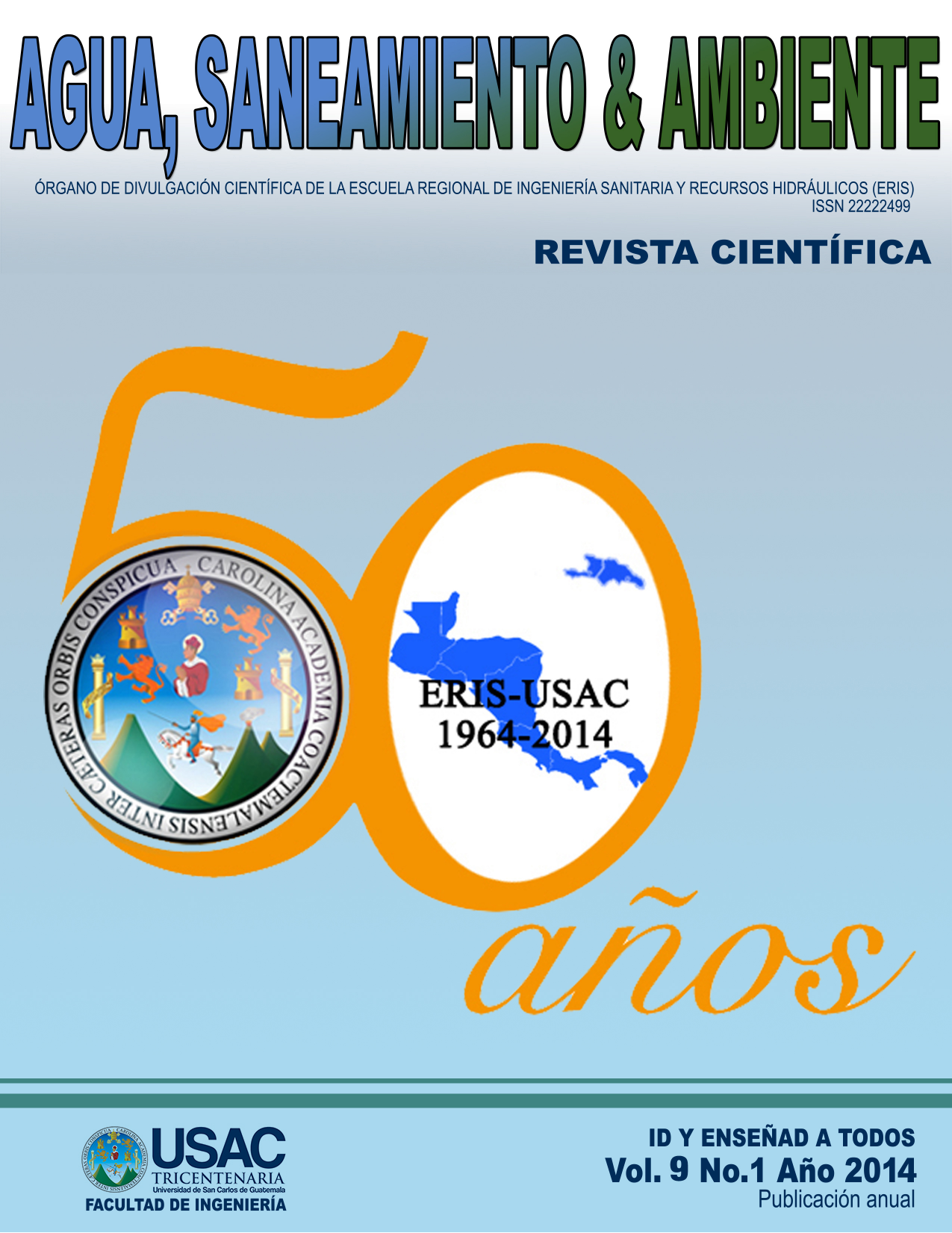DETERMINACION DE PARAMETROS DE DISEÑO, PUESTA EN MARCHA Y EVALUACION DE LA EFICIENCIA DE HUMEDALES DE FLUJO SUBSUPERFICIAL EN LA PLANTA PILOTO AURORA II, PARA EL TRATAMIENTO DE AGUAS RESIDUALES DOMESTICAS
DOI:
https://doi.org/10.36829/08ASA.v9i1.1471Palabras clave:
humedales, diseño de humedales, área superficia, tiempo de retención hidráulica, Aguas residuales, flujo subsuperficialResumen
La investigación sobre humedales de flujo subsuperficial consistió en diseñar construir y evaluar el humedal, determinando parámetros de diseño, dimensiones, tiempo de retención hidráulica, área superficial óptima, elaboración de planos constructivos, posteriormente la etapa de construcción se realizó en la Planta Piloto “Ing. Arturo Pazos Sosa”, la cual se desarrolló durante los meses de Febrero 2011 a Mayo del año 2011, utilizando como vegetación el Tul el cual se transportó de la laguna El Pino, se pudo comprobar que requirió un tiempo de un mes como periodo de adaptación y crecimiento. La evaluación se realizó a los dos meses de haberse sembrado el Tul alcanzando remociones del 63% para DBO5, 65% para DQO, 61% para Sólidos Suspendidos, 31% para Nitrógeno, y 30% en el Fósforo, con una relación de DBO5/DQO de 0.63 lo cual indica que la materia orgánica presente es muy biodegradable, y valores de pH arriba de 7.5. Se continuó con la evaluación durante los meses siguientes para conocer su comportamiento respecto al tiempo y los resultados demuestran que el sistema es eficiente en remoción de DBO5, DQO, Sólidos Suspendidos, y Nitrógeno total, con una alta eficiencia, no así en la remoción del fósforo. Después de 15 meses de estar en operación el humedal, la conclusión del estudio es que requiere un área por habitante equivalente de 1.5 m2 , (1 habitante equivalente = 150 lts/hab/día). Según Mara y Pearson 1,998 para lograr la misma calidad de agua utilizando lagunas de estabilización se necesitan 2.5 m2 como mínimo por habitante equivalente. Requiriéndose para este sistema una menor área por persona equivalente.
Descargas
Citas
Metcalf y Eddy.(1991) Ingeniería de las aguas residuales:Tratamiento, vertido y reutilización. 3 ed. México:Editorial McGraw-Hill 1996 1459 pp
Crities, Ron y Tchobanoglous George. Tratamiento de lasaguas residuales en pequeñas poblaciones.Colombia:Editorial McGraw-Hill, 2000 739 pp
U.S. Environmental Protection Agency, Desing Manual Constructed wetlands and aquatic plant systems for municipal wastewater treatment, EPA, 1988.
Romero, Rojas Jairo Alberto (1999) “Tratamiento de aguasresiduales para lagunas de estabilización” EditorialAlfaomega U.S. EPA/Environmental ProtecciónAgency, Región 6. Guía para el diseño yconstrucción de humedal de flujo subsuperficial.
Descargas
Publicado
Cómo citar
Número
Sección
Licencia

Esta obra está bajo una licencia internacional Creative Commons Atribución-NoComercial-CompartirIgual 4.0.







